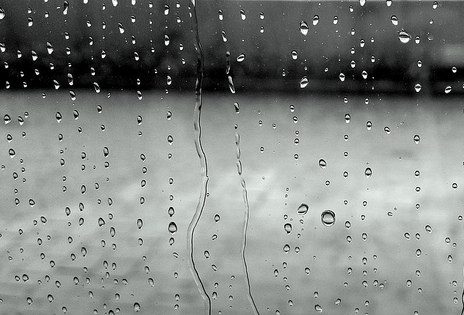When Allyn and I moved into our apartment together, his sister gifted us with the perfect housewarming present: a beautiful large Boston fern. I have never possessed the greenest of thumbs, but I really wanted a houseplant—both for aesthetic reasons and to help clean the air of toxins in our new little home. From what I read online, ferns did not seem too difficult to take care of. Allyn and I christened him “San Fern-ando” and snuggled him into his new home beside our bookshelf, in the pretty blue pot and stand that Allyson had also bought for us.
House plants are funny creatures. They don’t talk; they don’t wander around; they don’t whine or sigh or thump the floor with their tails like pets do. But they are definitely alive, and their presence definitely changes the dynamics of a room. I spend most of the day working alone from home, and San Fernando makes me feel like I have some company. I even find myself talking to him sometimes. He doesn’t seem to mind my off-key singing.
San Fernando, I quickly learned, liked to be watered more frequently than what I read online. Every Sunday, Allyn would put him in the shower and spray him liberally, leaving him in there overnight to soak. But once a week was not enough for our little fern. I began to spray him with our mister bottle every three days, and then every other day, and he seemed happiest of all when I remembered to spray him every day.
But, dear reader, I must admit: I did not always remember.
San Fernando is such a patient companion. He never complains. He never interrupts my day to ask for anything. He simply sits there in his pot, filtering our air, his green tendrils providing life and color in our home.
I have written before about how easy it is to take things for granted. Sometimes, San Fernando blends into the background and I forget about him. The days whirl by and while I could swear I watered him yesterday, in reality it was three days ago.
The weather has also been getting warmer, hot and dry, which means San Fernando needs more water than ever. Last week, I looked over at him and noticed that some of his leaves were turning brown and shriveled. He looked quite sad. “San Fernando!” I exclaimed. “Poor little guy!” I ran over, filled the little spray bottle, and sprayed him all over until he was dripping.

{source}
Now, I am trying to nurse San Fernando back to good health. I am spraying him morning and evening, and it makes my heart happy to see new little green tendrils sprouting up from his heart. San Fernando just needed some TLC to get back to a healthy place. But it will take some time to help him get there. It won’t happen overnight. Because I neglected San Fernando, and didn’t spray him a little bit every day, now it requires much more effort to get him back on track. {I’m sorry, San Fernando. I promise to be a better plant mother from now on!}
This is not only the case with Boston ferns. It is true for humans, as well. This ordeal with San Fernando made me think about the parallels with our own self-care.
Has this ever happened to you? You are super busy at work, or school, or with a new project, or a big volunteer event. In order to get everything done, you begin “burning the candle at both ends”—staying up late, getting up early. You’re exhausted, so you down a lot of caffeine each day—lots of coffee, or soda, perhaps even those “energy drinks.” You forget to eat enough, or you grab fast food instead of nourishing yourself with whole, healthful foods. There is no time at all for the gym. No time to relax with a good book, unwind with a bit of yoga, or daydream in the bath. No time to chat with your friends on the phone or write in your journal or practice gratitude. You are simply too busy!
You tell yourself that it is only for a little while and then you will get back on track. But “busyness” has a way of stretching out and stretching out, lasting and lasting. There is always something else that comes up—some new request, some extra task or obligation. Before too long, you end up like San Fernando: your leaves are shriveled and brown and droopy. Maybe you get sick. Maybe you “crash” during a meeting. Maybe you lash out, or break down, or feel entirely overwhelmed.
My dad likes to say, “An ounce of prevention is worth a pound of cure.” I think this also applies: “An ounce of self-care is worth a pound of wellness.” If you take care of yourself, carving out time for self-care even during the busy times, then you will be able to withstand even the most stressful of days. If I had been more vigilant in spraying San Fernando with water every day, then he would have been able to go a few days without water and his leaves would not have shriveled up. It was only because I had neglected him routinely that he began to wither.
So now, I am committing to diligently watering San Fernando every single day, and I am committing to “watering” my own soil and roots every day with small acts of self-care. I hope you will join me in this practice!
Your turn {if you want}:
Grab your journal or open a new document on your computer, and use the prompts below as inspiration for some free-writing:
- Have you ever neglected a house plant or outdoor garden?
- When was the last time you felt really busy or overwhelmed? What did you do to get out of that mindset?
- Write a list of acts of self-care that make you feel nourished and rested.











